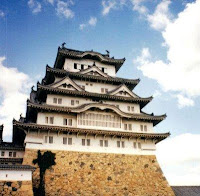Temple of Sojiwan Revive Back
 A Buddhist temple located in the Village of Kebondalem Kidul, Klaten, Central Java. This temple has long been undergoing refurbishment, as stated by the Center for Preservation of Archaeological Heritage (BP3) of Central Java.
A Buddhist temple located in the Village of Kebondalem Kidul, Klaten, Central Java. This temple has long been undergoing refurbishment, as stated by the Center for Preservation of Archaeological Heritage (BP3) of Central Java.
Previous research has been done about this temple, since the time of the Dutch East Indies about the year 1813, even BP3 believe there are still some temples buried in the trench area Sojiwan Temple.
As found by a team of BP3, some time ago they found some parts of the temple like the stupa and stairs, which are all separated in several places, including houses buried in the yard.
 According to several inscriptions that are stored at the National Museum of the Republic of Indonesia in Jakarta, approximately Sojiwan Temple built between 842 and 850 AD, roughly at the same time with the Temple of Plaosan.
According to several inscriptions that are stored at the National Museum of the Republic of Indonesia in Jakarta, approximately Sojiwan Temple built between 842 and 850 AD, roughly at the same time with the Temple of Plaosan.
This temple is not big as the Prambanan Temple that was nearby but it is also worth to visit because it has a different shape and character, it can be regarded as the fifth largest Buddhist temple in the region.
After a long experience in the restoration process, including when affected by tectonic earthquake in 2006, so it takes patience to get back into a more solid shape.
The restoration itself has involved various experts from different disciplines and the UNESCO world body, and from the date of December 14, 2011, this temple open for tourist visits as an
 interesting temple destination.
interesting temple destination.
Indeed, after the restoration of the temple, not many people know the uniqueness of this temple, one of the uniqueness is on located at the foot of the temple. There are 15 reliefs and each has a story that supposedly originated from the story of ancient India.
Relief is referred to as the "Jataka", a Buddhist religious teaching in those days, the whole story is engraved on every foot of the temple makes us look back, it turns out these old stories become relevant in this time present.
--------------------------------------------------------------
(Source BP3, Kompas /Images A Yuniarso, YogyaPlat and wikipedia)


Comments
Post a Comment